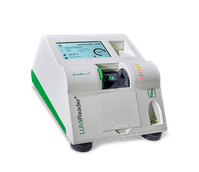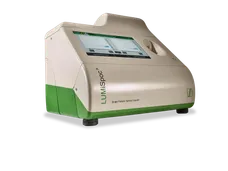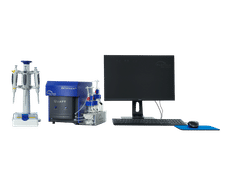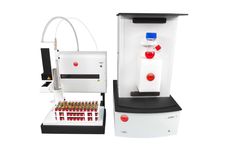Anton Paar acquires product line for particle characterization
Anton Paar expands the product portfolio for particle characterization by the acquisition of the corresponding division from CILAS (Orléans, France). The PSA instruments are based on the light scattering principle or image analysis. They give information about the size distribution and shape of particles. Applications range from investigations into dry powders to studies of particles in dispersions.

Execution of contract on May 6, 2017 at the Anton Paar Headquarter in Graz with Philippe Lugherini, Chairman and CEO of CILAS (left) and Maria Santner, Anton Paar GmbH
Anton Paar GmbH
The new products will be integrated into Anton Paar’s existing business area Particle Characterization. Jakob Santner, division manager of the Business Unit Characterization: “For Anton Paar GmbH this acquisition is an important step to expand the portfolio in particle analysis. The instruments from CILAS are internationally acknowledged quality instruments for the measurement of nanoparticles and microparticles and represent an excellent addition to our Litesizer™ product line. We now offer our customers measuring systems for an enormous measuring range. This begins with particles of the size of a single water molecule and ends with pebble-sized particles.” CILAS has been developing cutting-edge laser technologies for more than fifty years. Philippe Lugherini, Chairman and CEO of CILAS: “We are extremely happy that Anton Paar will continue this product line that we have pioneered for years now. The PSA business will definitely benefit from the global instrumentation strategy of Anton Paar.”
The instruments in the PSA series expand the current portfolio of instruments for particle size measurement based on dynamic light scattering, extend the available size measuring range with instruments based on the principle of laser diffraction, and add the technology of image analysis to Anton Paar’s product range. The application areas are diverse. The pharmaceutical and chemical industries, in particular, as well as companies and institutions in the fields of cosmetics, food, and building materials show specific interest.
Laser diffraction is capable of measuring size distributions of particles in dry powders or in liquid dispersions. The measurable sizes usually range from the upper nanometer range up to a few millimeters. Via image analysis it is possible to gain insight into the shape of the particles. A practical example: the knowledge and control of the powder particle size and shape is used to increase the efficiency of medical products.
Other news from the department business & finance
These products might interest you
Most read news
More news from our other portals
See the theme worlds for related content
Topic World Particle Analysis
Particle analysis methods allow us to study tiny particles in various materials and reveal their properties. Whether in environmental monitoring, nanotechnology or the pharmaceutical industry, particle analysis gives us a glimpse into a hidden world where we can decipher the composition, size and shape of particles. Experience the fascinating world of particle analysis!

Topic World Particle Analysis
Particle analysis methods allow us to study tiny particles in various materials and reveal their properties. Whether in environmental monitoring, nanotechnology or the pharmaceutical industry, particle analysis gives us a glimpse into a hidden world where we can decipher the composition, size and shape of particles. Experience the fascinating world of particle analysis!


































































